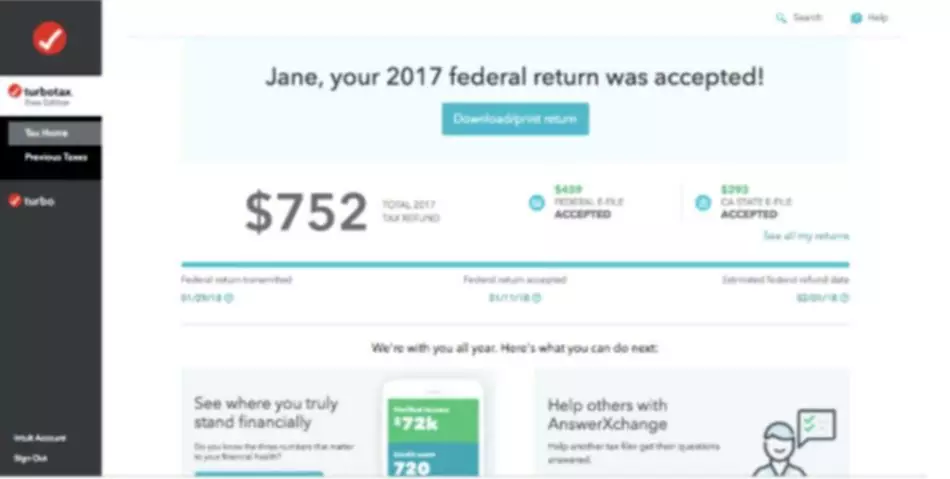Content

Despite the “expense” in the name, the company receives positive economic benefits from the expense over the course of several periods, hence its classification as a current asset. An income statement is one of the four primary financial statements. It may go by other names, including the profit and loss statement or the statement of earnings. It is shown under the assets section on the balance sheet along with other assets such as cash,… Timely, reliable data is critical for decision-making and reporting throughout the M&A lifecycle.adult sex toys
lovense sex toy
air jordan balck
nfl tshirt
nfl san francisco 49ers
custom football jersey
men’s nike air max 90
wig stores
dallas cowboys jersey
nike air max 95
adidas outlet
custom basketball jersey
- Due to its nature, people may wonder whether prepaid insurance is an asset or an expense.
- If you report all the income in January, it will make you look very successful – followed by 11 months when you don’t get any income from the work.
- When the $2,400 payment is made on January 1, the company debits Prepaid Insurance and credits Cash.
- The payment of expense in advance increases one asset (prepaid or unexpired expense) and decreases another asset (cash).
As the insurance will not be used until and unless the first quarter of next year arrives, it will be reflected under the Asset side of the company as prepaid insurance. It will be shown as an expense when the 1st quarter of next year arrives. BlackLine and our ecosystem of software and cloud partners work together to transform our joint customers’ finance and accounting processes. Together, we provide innovative solutions that help F&A teams achieve shorter close cycles and better controls, enabling them to drive better decision-making across the company.
Prepaid Expenses Definition in Accounting
When someone purchases prepaid insurance, the contract generally covers a period of time in the future. For instance, many auto insurance companies operate under prepaid schedules, so insured parties pay their full premiums for a 12-month period before the coverage actually starts. The same applies to many medical insurance companies—they prefer being paid upfront before they begin coverage. The accounting process for booking prepaid expenses is to initially record the payment as an asset and then gradually reduce that balance over time as the goods or services are used. When the benefits are realized over time for such assets, then they get recorded as an expense in each related accounting period on the income statement.
- As the insurance will not be used until and unless the first quarter of next year arrives, it will be reflected under the Asset side of the company as prepaid insurance.
- LegalZoom provides access to independent attorneys and self-service tools.
- The journal entry credits the prepaid asset account (on the balance sheet) and debits the expense account (on the income statement).
- The concept of prepaids is not used in the cash method of accounting, which is most often used by small businesses.
- Assets are economic resources of a company and liabilities are obligations of a company.
While reviewing a company’s balance sheet, you’ll likely notice a “current assets” section at the top of the schedule. Within this category, companies have some fairly standard accounts that act as placeholders for assets the company expects to receive or use up within one year. A prepaid expense is recorded as a credit and a debit, but it is all based on the accounting period and timing. Hence, this is why a financial automation solution is of such great use because you wouldn’t want to forget about a record related to a prepaid expense because it could end up messing up your books. It includes insurance, rent, subscription, and utility bill payments. Prepaid expenses offer tax benefits as well as help you hedge against inflation.
Benefits of Prepaid Insurance
There would be $0 left in the prepaid expense asset account shown in the current asset section of the balance sheet. Essentially, prepaid insurance is an asset till the insurance premium expires. Until then, companies must keep classifying the amount under current assets on the balance sheet. Once the premium expires, they must move the relevant portion to insurance-related expenses in the income statement.

Explore the future of accounting over a cup of coffee with our curated collection of white papers and ebooks written to help you consider how you will transform your people, process, and technology. F&A leadership can have a significant impact by creating sustainable, scalable processes that can support the business before, during, and long after the IPO. This company-wide effort crosses multiple functional areas and is reinforced by critical project management and a strong technology infrastructure. Finance and accounting expertise is not only needed to prevent ERP transformation failures, but F&A leaders are poised to help drive project plans and outcomes.
Why are prepaid expenses an asset?
As of November 30, none of the $2,400 has expired and the entire $2,400 will be reported as prepaid insurance. In simple terms, it’s how the consumption of a prepaid expense gets recorded over time. The amount of a common accrual, i.e. rent or insurance, is gradually reduced to zero. The expense moves to the profit and loss statement during the accounting period when the company uses up the accrual. During this period, companies must transfer the expired portion of the premium to the income statement. The journal entry for this aspect of prepaid insurance is as follows.
Is prepaid a liability or asset?
Prepaid expenses are considered current assets because they are amounts paid in advance by a business in exchange for goods or services to be delivered in the future.
At each time that a portion of the expense is allocated, then it’s also deducted from the total cost that was first denoted in the asset account. The reason that prepaid expenses exist is because of accounting methods. To exemplify, the generally accepted accounting principles (GAAP) notes that expenses are to be recorded in the same accounting period as when the asset delivers its benefits. Insurance is basically a prepaid expense, because once one purchases a policy, the service (or coverage) will be received in the future. For instance, a death benefit cannot be given to the policyholder if he or she is still alive.
Balance sheet vs. income statement: Which one should I use?
Prepaid expenses are payments made in advance for goods or services yet to be received, but which will be used in the future. Examples of prepaid expenses include prepaid rent, insurance premiums, and annual subscriptions. Prepaid expenses are considered assets on a company’s balance sheet until they are used or expire. During the first month of occupancy, the business records https://www.bookstime.com/ an adjusting journal entry to debit rent expense for $10,000 and credit prepaid expenses $10,000. The balance in the prepaid expense account at the end of the first month is, therefore, $50,000 and rent expense is $10,000. The $50,000 balance in prepaid expense appears on the balance sheet for the month, while the $10,000 rent expense appears on the income statement.
Red Co. records this transaction using the following journal entry. Supposing a company has paid commercial property insurance for a building for $60,000 that covers an entire year. Each month after coverage begins, $5,000 is transferred from asset to expense. Simultaneously, as the company’s recorded balance decreases, the expense appears on the income statement in the period corresponding with the coinciding benefit. Under the accrual method of accounting, income is recognized when it is earned and expenses are recognized when incurred, regardless of when cash exchanges hands for the transaction.
Prepaid Insurance Journal Entry
Prepaid expenses are expenses that have been paid in advance but have not yet been incurred or consumed. They are assets on the balance sheet and represent the amount of money a company has paid for goods or services that it will receive in the future. Prepaid expenses are assets that can be found in a balance sheet that can be extracted from advance payments received from goods and services to be offered by a business in the future. Initially, the payment made in advance is recorded as a current asset, but the carrying balance is reduced over time on the income statement per GAAP accounting standards. Prepaid rent is the payment of a lease that has been made for a set timeframe in the future. This involves the company making a cash payment to the renting firm, though as the rent expense would not have been incurred yet, the business will need to record the prepaid rent as an asset.
Is prepaid insurance a liability in accounting?
Key Takeaways
Accountants view the insurance that businesses prepay as an asset. If companies use the coverage within a year after purchase, prepaid insurance is a current asset.
Finance and IT leaders share a common goal of equipping their organizations with ways to work smarter to enable competitive advantage. This intersection between CFO and CIO priorities is driving more unity in terms of strategy and execution. Unlock capacity and strengthen resilience by automating accounting. Energize your accounting team by creating capacity with automation. Unlock growth capacity with tax-effective intercompany operations. Automate invoice processing to reduce manual invoicing costs, maintain compliance with e-invoicing regulations, and increase efficiency across your invoice-to-pay process.
Expense method
There are more than 500 trucks under the company’s assets, and all trucks are operational. The company is a mid-sized company, and nearly 500 employees are working for the prepaid insurance journal entry company. Every quarter, the company pays insurance for the assets and employees. The company decided to pay the interest expense of the first quarter for the next year.
- For most industries, a company’s current assets are defined as cash and other assets that will turn to cash or will be used up or consumed within one year of the balance sheet date.
- Prepaid revenue – also called unearned revenue and unearned income – is the reverse; it’s money someone pays your company in advance of you doing the work.
- It would be incorrect to charge the whole $4,800 to 2019’s profit and loss account.
- BlackLine is a high-growth, SaaS business that is transforming and modernizing the way finance and accounting departments operate.
- As mentioned above, the premiums or payment is recorded in one accounting period, but the contract isn’t in effect until a future period.
In contrast, accrued expenses are costs incurred by a company but not yet paid for, typically due to the absence of an invoice (i.e. waiting on the bill). Whether you’re looking for investors for your business or want to apply for credit, you’ll find that producing four types of financial statements can help you. – According to the standards set by the Generally Accepted Accounting Principles (GAAP), expenses that have yet to be incurred cannot be documented on the company’s profit and loss statement. – Prepaid expenses are defined as expenses incurred for assets that the company will be receiving at a later date. Global and regional advisory and consulting firms bring deep finance domain expertise, process transformation leadership, and shared passion for customer value creation to our joint customers. Our consulting partners help guide large enterprise and midsize organizations undergoing digital transformation by maximizing and accelerating value from BlackLine’s solutions.
